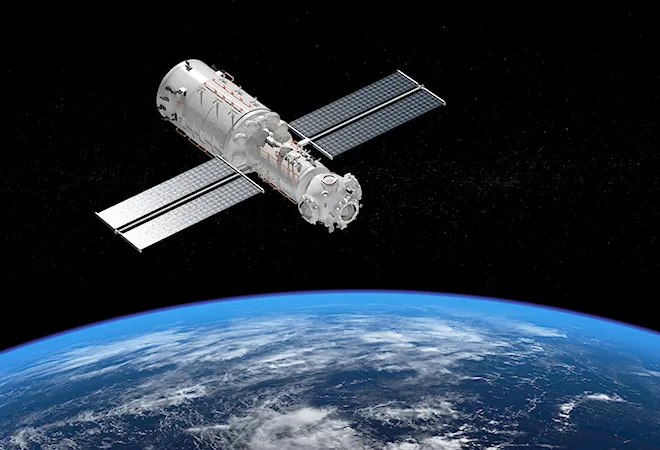
Commercial satellite servicing—commonly defined as the ability to reposition, refuel, repair, assemble, and remove satellites on or from orbit—is finally becoming reality. Long proposed as being “just around the corner”, satellite servicing has made significant technological leaps in the last decade and is now emerging as a potential new market for private sector space activities that could provide incredible benefits. Yet, for satellite servicing to mature and thrive, governments need to step up and play their part. They need to move past the standard talking points on dual-use technologies and get serious about putting in place the policies and regulations that will help advance satellite servicing in a positive manner.
Although the concept behind satellite servicing is not new, it is entering a new phase of maturity. Many of the underlying technologies, such as autonomous rendezvous and proximity operations (RPO) and space robotics, were originally pioneered by governments and are now rapidly proliferating and maturing in the private sector as part of the overall commoditisation of space technologies. What began as national-level programs to support human spaceflight and assembly of the International Space Station (ISS) is now being explored by startup companies and universities for a wide range of applications.
Three recent examples demonstrate how far things have come. On 25 February 25 2020, the SpaceLogistics Mission Extension Vehicle 1 (MEV-1) completed the first ever commercial docking with another satellite when it joined up with Intelsat’s IS-901 communications satellite. That feat was repeated on 12 April 2021, when MEV-2 successfully docked with Intelsat’s 10-02 communications satellite. Both MEVs are now conducting five-year missions to extend the life of those Intelsat satellites by taking over maneuvering and station-keeping. Additionally, on 25 August 25 2021, Astroscale Inc. successfully tested its magnetic docking plate technology by releasing and then recapturing a small subsatellite from its ESLA-d satellite, which was the first part of a series of demonstrations of the technology for eventually removing space debris from orbit.
Many of the underlying technologies, such as autonomous rendezvous and proximity operations (RPO) and space robotics, were originally pioneered by governments and are now rapidly proliferating and maturing in the private sector as part of the overall commoditisation of space technologies.
SpaceLogistics and Astroscale are just the beginning of a new wave of global companies that are developing, testing, and operationalising satellite servicing technologies. The Consortium for Execution of Rendezvous and Servicing Operations (CONFERS) now counts more than 50 private sector entities among its membership, hailing from Australia, Belgium, Canada, France, Germany, Japan, Switzerland, and the United States (US). They represent manufacturers, component suppliers, operators, clients, and third-party service providers of a young but rapidly growing market segment. While many of these capabilities have yet to be commercially proven, it is clear that the underlying technologies are no longer the obstacle they once were.
Unfortunately, the most common policy issue raised when discussing commercial satellite servicing is still the dual use nature of these technologies. Nearly every news story and op-ed includes a version of the phrase, “but they’re all just space weapons”. While there is a grain of truth in that statement, the same could be said for all automobiles or pencils and be equally true and a distraction from the real policy issues at hand. Those being, how do we distinguish the use of satellite servicing technologies for positive benefits, such as extending the life of satellites and removing orbital debris, from hostile or nefarious uses of similar technologies by governments? How do we enable these capabilities to develop for positive benefits while discouraging their use for harm?
Industry groups like CONFERS have already started to develop their own proposals for best practices and standards to answer this question. In 2018, CONFERS issued its inaugural Guiding Principles and Recommended Design and Operational Practices, which outlined the broad principles and practices its members agreed to abide by. Key among those principles and practices are increasing the transparency of commercial satellite servicing activities so as to help distinguish them from hostile or aggressive activities in space and ensuring that they are only done in a consensual manner. Additionally, the International Organisation for Standardisation (ISO) is finalising a multi-year process to develop the first high level international standard for satellite servicing, based largely on the CONFERS principles and practices.
The International Organisation for Standardisation (ISO) is finalising a multi-year process to develop the first high level international standard for satellite servicing, based largely on the CONFERS principles and practices.
Governments need to do their part too, mainly by putting in place the national policy and regulatory frameworks to oversee and enable commercial satellite servicing. Under Article VI of the 1967 Outer Space Treaty, States have the obligation to provide authorisation and continuous supervision of their space activities, including those done by their private sector entities. Several countries—including France, Japan, the United Kingdom (UK), and the US—are in the process of developing their national policies and regulatory frameworks for satellite servicing. In doing so, they should leverage industry practices and standards, such as those developed by CONFERS and ISO, to the largest extent possible while still keeping in mind their national interests and requirements. The key is to develop oversight frameworks that enable satellite servicing to prosper while ensuring it complies with international space law principles.
In addition to oversight, governments also have an important role in supporting commercial satellite servicing while the industry is still in its early stages. In addition to avoiding development of separate government standards, interfaces, or operational architectures that could conflict with those developed by industry, governments should also refrain from competing with commercially-available capabilities. Governments should consciously invest in commercial satellite servicing products and services to develop capabilities and competitive markets in areas they anticipate needing in the future.
It is time for the space community to move past the rhetorical debates over the dual-use aspect of satellite servicing and put in place the policies and frameworks to deal with the impending revolution in space activities. Commercial satellite servicing is coming, and with it a potential revolution in how humanity uses space. Done right, these policies and frameworks can help ensure that commercial satellite servicing advances the sustainability, safety, and security of space for the benefit of all.
The views expressed above belong to the author(s). ORF research and analyses now available on Telegram! Click here to access our curated content — blogs, longforms and interviews.




 PREV
PREV


